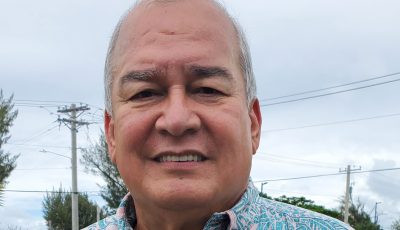Proposed constitutional change to clarify legislative vacancies
A new proposal to amend the NMI Constitution seeks to clarify the process in which a vacancy in the Senate or House of Representatives is filled, to avoid a lengthy process that reached the Supreme Court in determining the replacements for at least two vacant Senate seats.
Rep. Christopher Leon Guerrero (Cov-Saipan) will introduce today House Legislative Initiative 18-14, which he prefiled on Friday, amending Article 2 Section 9 of the NMI Constitution to clarify that a vacant legislative seat shall be filled by the person who was the unsuccessful candidate for the same office in the same election who received the largest number of votes and is willing to serve; effectively, the runner-up to the vacating senator, “regardless of the timing of that election.”
Leon Guerrero said it is time that the question is placed before CNMI voters, by passing the initiative.
“Who replaces a senator who was elected in 2009 if there was a subsequent election conducted in 2012, just prior to the vacancy arising? Does the governor appoint the so-called ‘runner up’ in the 2009 election who actually ran against and received fewer votes in the exact same election to the vacating senator? Or does the governor appoint the ‘unsuccessful candidate for the office in the last election who received the largest number of votes and is willing to serve’ from the 2012 election which was the election that last occurred following the creation of the vacancy?” Leon Guerrero asked, in prefiling HLI 18-14.
The last time the CNMI had to deal with a Senate vacancy was when former senator Juan M. Ayuyu resigned from office while waiting for court sentencing related to smuggling of endangered fruit bats.
A Supreme Court opinion in November paved the way for former Senate president Paul Manglona’s appointment, being the second highest vote getter in the 2012 Rota senatorial race, even as others still believe that someone from the 2009 race where Ayuyu ran should have been appointed instead.
Leon Guerrero said that by treating both the House and Senate in exactly the same manner, Article 2 Section 9 of the NMI Constitution fails to address one of the critical differences between the two legislative houses, including the staggered term of four years in the Senate.
As a result of the staggered Senate elections, a Senate “vacancy” that occurs after a subsequent election means that the term “last” election may be reasonably interpreted in two different and seriously conflicting ways.



























